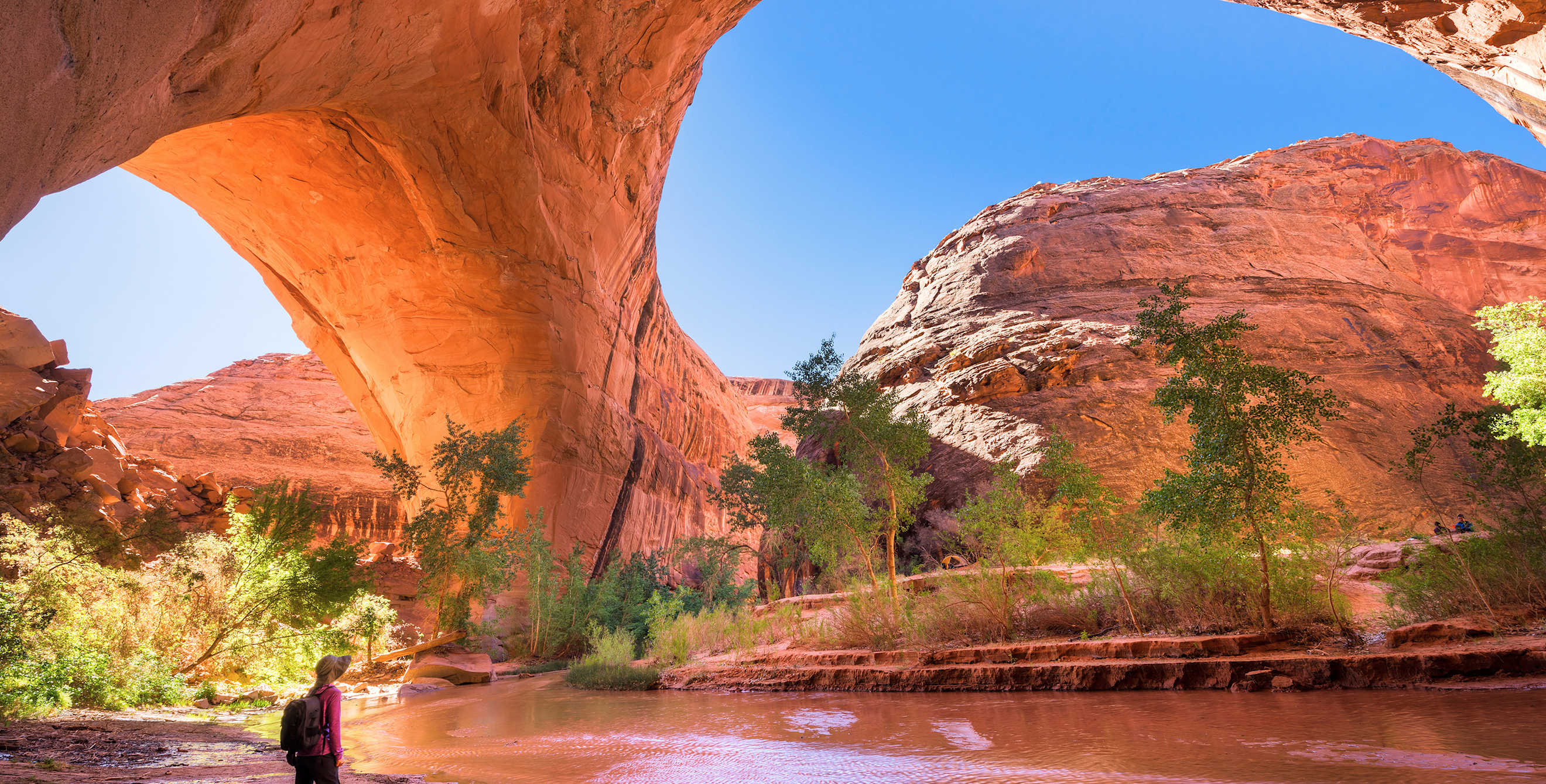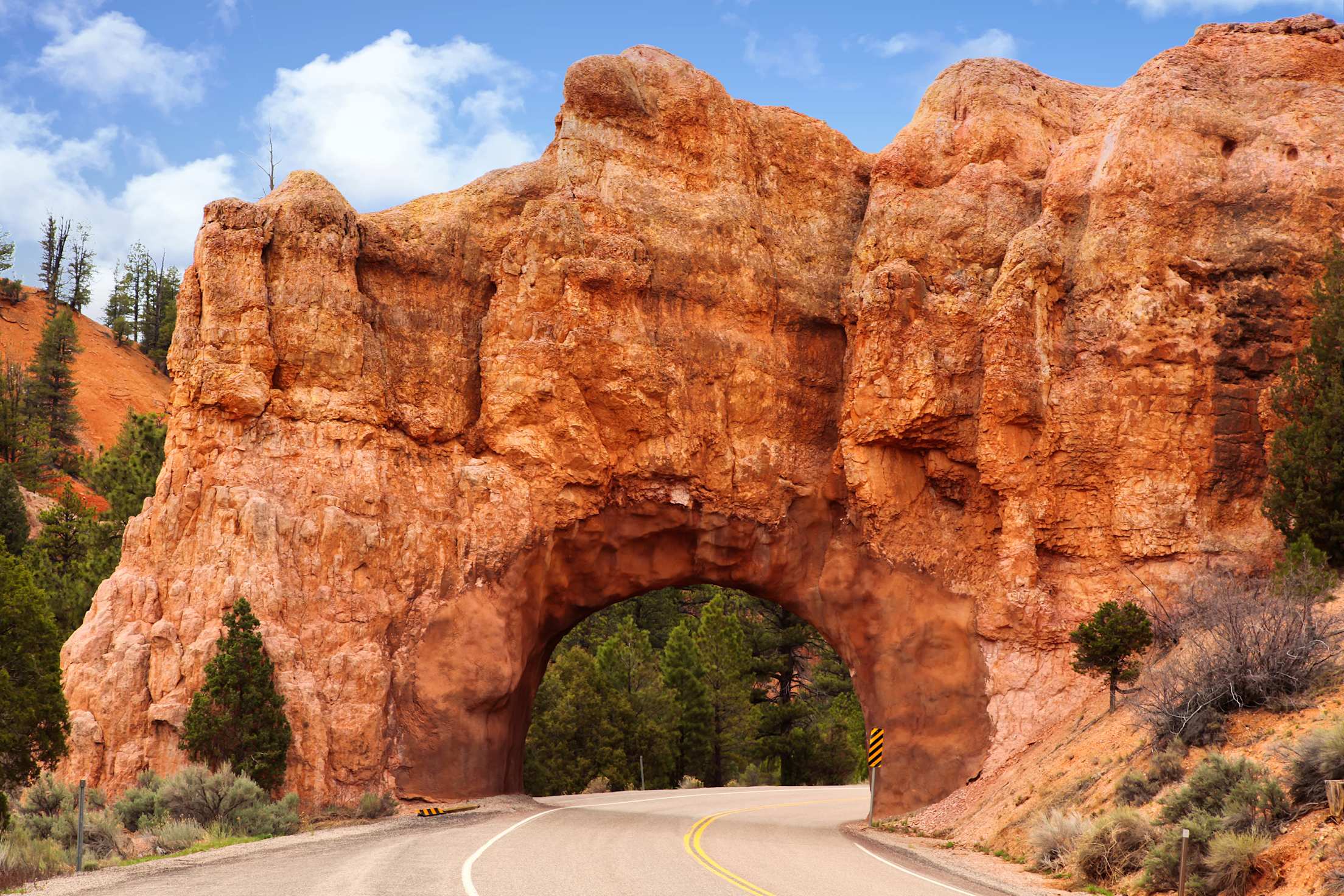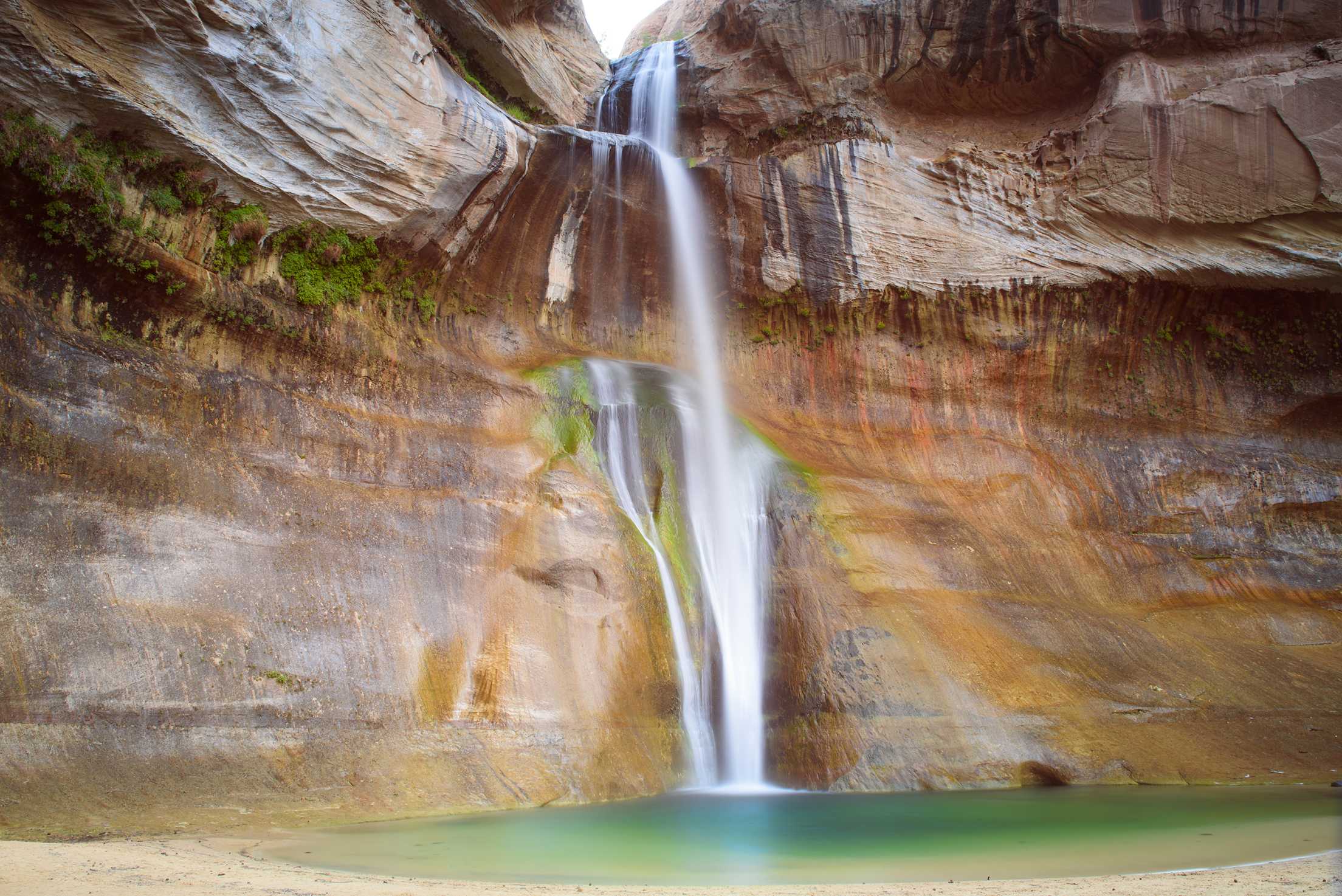
Experience Utah's Grand Staircase-Escalante National Monument
Enormous, magnificent, and free of crowds, Grand Staircase–Escalante National Monument is all yours.

Escalante has no commercial airport or interstate, no traffic jams or stoplights. There is only one road to this dusty outpost in southern Utah: Highway 12, a long curling ribbon of blacktop that traverses some of the most spectacular desert in the country. From the town of Torrey, the narrow two-lane route ascends Boulder Mountain, passing quilted aspen groves, spruce forests, and meadows patrolled by elk, with intermittent vistas of canyons unfurling to the horizon.
But the most singular view on this 65-mile stretch is seen from the Hogsback, a fin of stone whose shoulders fall away from the road's edges. On all sides stretches the northern tip of Grand Staircase–Escalante National Monument, a seemingly endless swath of untouched sandstone steps, buttes, and canyons preserved by their ruggedness for thousands of years. To explorers, this landscape marked by cracks, cliffs, and hoodoos posed a riddle so formidable that it was one of the last places in the continental United States to be mapped.
Today, the monument's nearly 1.9 million acres of territory has been charted but still remains largely unfrequented. Thanks to its remote location, it is often overlooked in favor of its renowned and more easily reached neighbors, Capitol Reef National Park to the north and Bryce Canyon and Zion National Parks to the west. Without the throngs of sunbaked visitors, the preserve and the town of Escalante, which lies almost within the monument's boundaries, feel refreshingly wild. There are few places more peaceful to contemplate the forces that formed southern Utah's cathedrals of rock.

The monument is laced with rough tracks only suitable for four-wheel-drive vehicles, but some of the most beautiful canyons and hoodoos are easily reached in a sedan. Early morning is a good time to walk to Lower Calf Creek Falls, a 126-foot cascade that tumbles into a strikingly clear pool perfect for swimming. The moderate hike, six miles roundtrip, starts from a parking lot next to the highway. It leads along creek banks alive with birds and past the looming bulk of sandstone cliffs decorated with ancient pictographs of mysterious humanoid figures.
South of the town of Escalante sits Devils Garden, a gathering of red and beige arches and statues threaded with footpaths. It's 12 miles down the dirt Hole-in-the-Rock Road, which is usually passable to cars when dry. Travelers should check with one of the visitor centers for road and trail conditions. At sunset, the place is quiet, and hikers can watch as the sun's peach glow fades from the rock and the horizon turns violet. This is when the desert's elusive wild creatures—foxes, lizards, rabbits—emerge to scratch out an existence in the cool stillness of twilight.
Another 14 miles down that dirt road, a maze of sandstone slot canyons hides some of the area's most iconic sights. From above, they look like nothing more than dark cracks in the desert. But from within, each is a series of voluptuous stone rooms and passageways sculpted by water. To reach the entrances of these slots, known as Peek-a-Boo, Spooky, and Brimstone, visitors park at the Dry Fork Trailhead and follow the faint path down the ledges of a natural staircase into a gulch. Popular because they're close to the road, the canyons are still challenging. Inside Spooky the walls grow taller and ever closer as explorers walk along the sandy floor, clamber up stone ramps, shimmy along small ledges, and turn sideways to slip through very narrow hallways.

Although the canyons can seem impossibly forbidding, marked by the extremes of heat and cold, aridity and flooding, human beings have lived in the area for hundreds of years. In the tiny community of Boulder, about 30 miles north of Escalante, the Anasazi State Park Museum preserves the remains of an ancestral Puebloan village dating to the middle of the 11th century. As many as 200 people may have lived here at one time, and archaeologists have unearthed 10 pit structures, 97 rooms, and more than 162,000 artifacts, including arrowheads, tools, and ceramic pots.
The town of Escalante, which now harbors a hardy population of about 800 people, remains peppered with evidence of the more recent past: Historic cabins, Victorian homes, and simple farmhouses, some well over a century old, dot the grid of streets. The community retains its frontier character, with only a small handful of art galleries, lodges, and restaurants catering to visitors.
The Escalante Heritage/Hole-in-the-Rock Center tells the memorable story of the 1879 Mormon wagon train that forged a hair-raising route from the dirt road that passes Devils Garden. After threading through deeply etched canyonlands and descending a 1,000-foot cliff to the Colorado River, the settlers eventually founded Bluff, Utah.
In the evenings, dusty hikers congregate at Escalante Outfitters, an outdoor shop with racks of maps that also serves pizzas such as the Silver Falls, adorned with spinach, feta, mushrooms, and slowroasted tomatoes. Down the street, Circle D Eatery offers up juicy burgers. After dark, visitors head to the drive-in theater at the Ofland Escalante, where moviegoers can reserve a 1960s convertible and watch old westerns under a star-sprinkled sky.
The resort also rents vintage Airstreams, cabins, and RV sites. Each trailer comes outfitted with a deck and grill, as well as Adirondack chairs that provide a crucial experience: tranquil moments overlooking the sagebrush, with the shadowy quiet of the slot canyons, the whispers of wind rushing over rock, the crayon-bright cactus blooms, and the humbling realization that in running a hand over the cool, gritty sandstone you are touching 190 million years of history.
Get more out of your vacation: Book through AAA Travel for exclusive Member benefits.